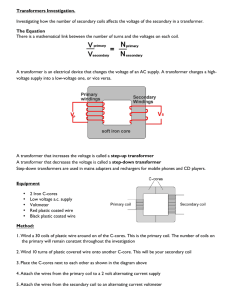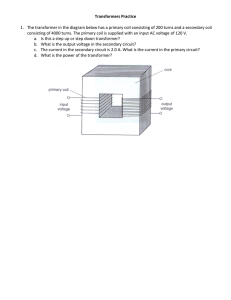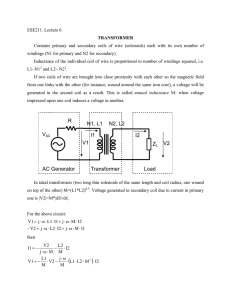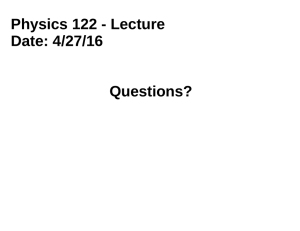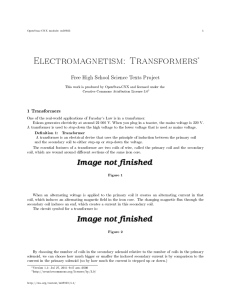Transformers and Transmission Lines - H
advertisement
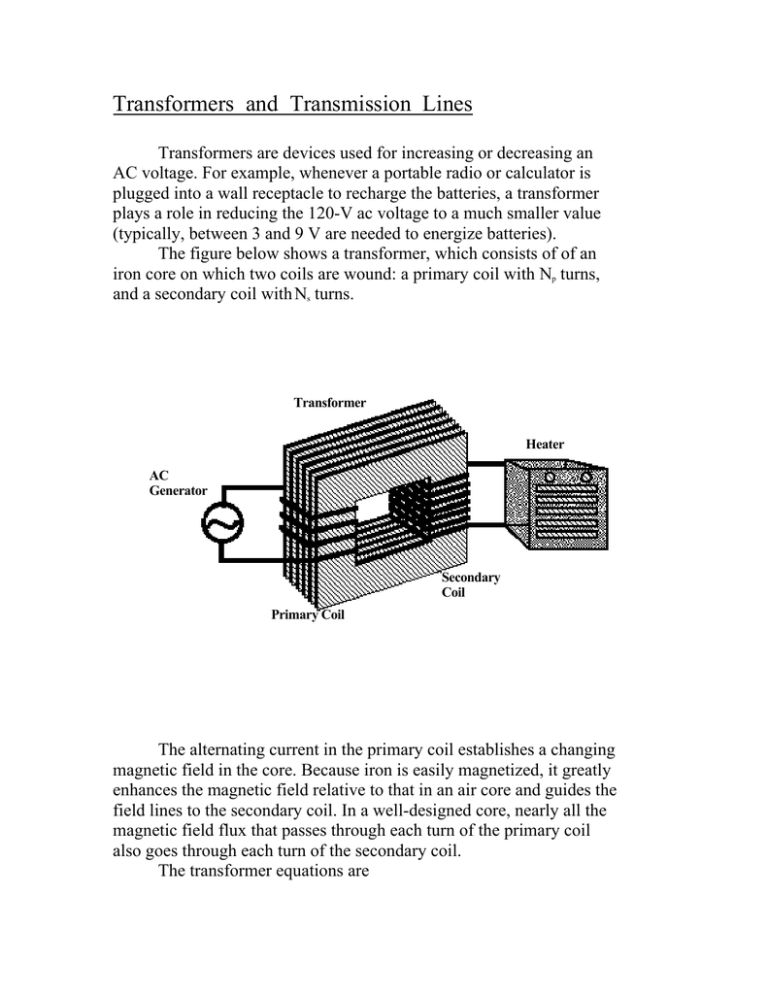
Transformers and Transmission Lines Transformers are devices used for increasing or decreasing an AC voltage. For example, whenever a portable radio or calculator is plugged into a wall receptacle to recharge the batteries, a transformer plays a role in reducing the 120-V ac voltage to a much smaller value (typically, between 3 and 9 V are needed to energize batteries). The figure below shows a transformer, which consists of of an iron core on which two coils are wound: a primary coil with Np turns, and a secondary coil with Ns turns. Transformer Heater AC Generator Secondary Coil Primary Coil The alternating current in the primary coil establishes a changing magnetic field in the core. Because iron is easily magnetized, it greatly enhances the magnetic field relative to that in an air core and guides the field lines to the secondary coil. In a well-designed core, nearly all the magnetic field flux that passes through each turn of the primary coil also goes through each turn of the secondary coil. The transformer equations are Vp Vs = Np Ns and Ip Is = N N p s where Vp , Ip , Vs , and Is are the voltages and currents in the primary and secondary coils, respectively. Notice that in an ideal transformer (where there are no losses) the power is neither stepped up nor stepped down, since Pp = Ps . Transformers play an important role in the transmission of power between electrical power plants and the communities they serve. Whenever electricity is transmitted, there is always some loss of power due in the transmission lines themselves due to resistive heating. Since the resistance of the wires is proportional to their length, the longer the wires the greater the power loss. Power companies reduce this loss by using transformers that step up the voltage to high levels, while reducing the current. A smaller current means less power loss, since P = I2 R, where R is the resistance of the transmission wires. In the figure below, the power plant produces a voltage of 12,000 V. The voltage is then raised to 240,000 V by a 20:1 step-up transformer. The high-voltage power is sent over the long-distance transmission line. Upon arrival at the city, the voltage is reduced to about 8,000 V at a substation using a 1:30 step-down transformer. The power is then distributed to users. However, before any domestic use, the voltage is further reduced to 240 V (or possibly 120 V) by another step-down transformer that is often mounted near the top of a utility pole. 12,000 V 240,000 V High Voltage Transmission Line 8,000 V 240 V Step-down Transformer Power Plant Step-up Transformer Step-down Transformer (substation) Household

